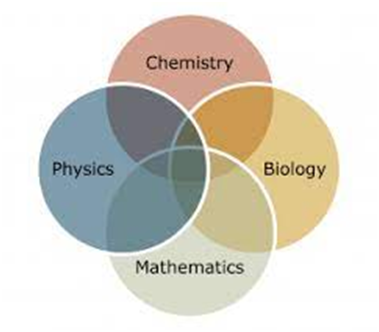Catalysis
Human have known about
catalysis for many centuries, even though they knew nothing about the chemical
process that was involved. The making of soap, the fermentation of wine to
vinegar, and the leavening of bread are all processes involving catalysis. In 1812
Russian chemist Gottlieb Sigismund Constantin Kirchhof studied the behavior
of starch in boiling water. Under most circumstances, kirchhof found, no change
occurred when starch was simply boiled in water. But adding just a few drops of
concentrated sulfuric acid to the boiling water had a profound effect on the
starch. In very little time, the starch broke down to form the simple sugar
known as glucose. When kirchhof found that the sulfuric acid remained unchanged
at the completion of the experiment, he concluded that it had simply played a
helping role in the conversion of starch to sugar.
Catalysis reactions are usually categorized as either
homogeneous or heterogeneous reactions. A homogeneous catalysis reaction is one
in which both the catalyst and the substances are in the same phase, I,e either
solid, liquid or gas. A heterogeneous catalysis reaction is one in which the
catalyst is in a different phase from the substances on which it acts.
Some of the most interesting and important catalysts are those
that occur in living systems: The enzymes. All of the reactions that take place
within living bodies occur naturally, whether or not a catalyst is present. But
they take place so slowly on their own that they are of no value to the
survival of an organism, For example, when a sugar cube is placed In a glass of
water, it eventually breaks down into simpler molecules with the release of
energy. But that process might take years. A person who ate a sugar cube and
had to wait that long for the energy to be released in the body would die. Our
body also contains catalysts (enzyme) that speed up such reactions. They make
it possible for the energy stored in sugar molecules to be released in a matter
of minutes.
An enzyme is a
specialized protein produced with an organism which is capable of catalyzing a
specific chemical reaction. Since the enzyme acts as a catalyst, it is also
called a biocatalyst. A catalyst influences the rate of a chemical reaction,
usually without undergoing any change itself so in this respect an enzyme
differs from a normal catalyst.
STRUCTURE OF ENZYMES
All enzymes are protein which are high molecular weight
macromolecules. An enzyme may consist of a single polypeptide chain or a
cluster of polypeptide chains. A polypeptide chain is made up of number of
amino acid units linked by peptide bonds.
The sequence and number of the 20
amino acids which make up enzyme varies in different enzymes. This arrangement
of enzymes is specific for a particular enzyme and determines the properties of
the enzyme. The polypeptide chain has an amino (-NH2) terminal and a
carboxyl (-COOH) terminal biosynthesis of the enzyme begins at amino terminal.
The different parts of the
polypeptide chain are linked by disulphide (-S-S-) bridges. These bridges may
be within a polypeptide chain or may connect two polypeptide chains.





0 Comments